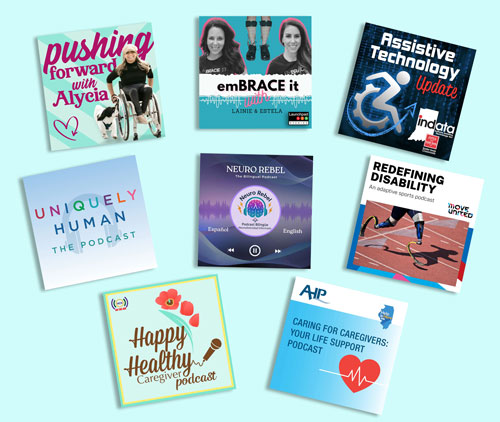Podcast listening has become a powerful way to get in-depth coverage of the day’s news; gain exposure to diverse opinions, explore new ways of thinking, and connect with stories that might not be available elsewhere.
Podcasts about disability issues—some long-running and others relatively new—offer a range of options for listeners. Below, we highlight eight of our favorites.
Hosted by disability advocate and Ted-X speaker Alycia Anderson, this podcast aired its first episode in June 2023. Since then, Anderson and her guests have discussed issues such as workplace inclusion, digital accessibility, ableism, and shared personal stories of resilient individuals.
emBRACE It with Lainie and Estela
Lainie Ishbia and Estela Lugo, who both wear leg braces due to neuromuscular conditions, host this long-running podcast about the trials and tribulations of living with disability. They are “passionate about helping others feel confident in their own skins.”
This podcast offers timely, practical and enlightening information about the experiences of autistic and neurodiverse individuals. Hosted by Barry Prizant and Dave Finch, the show’s most popular episodes include topics like aging with autism, gratitude and the autistic experience, and autism and anxiety.
This podcast delves into the topic of neurodiversity with “substantive, science-backed” information. It’s appropriate for neurodiverse individuals, allies, parents, educators and anyone who’s interested in learning about the fascinating ways brains work.
Those who care for people with disabilities and/or chronic illnesses need support too! This podcast hosted by certified caregiving consultant Elizabeth Miller includes tips, guidance and interviews with caregivers who’ve experienced all the highs and lows.
Another podcast for caregivers, this one from Washington AARP offers insights and information that make caregiving easier. For example, the latest episode featured ways to use AI to “reduce repetitive tasks, virtual doctor visits that include family members, ways to increase mobility and more.”
Assistive Technology Update with Josh Anderson
This biweekly podcast offers the latest news about all things assistive technology. Recent topics have included: improvement in audiology tech, robotics and smart glasses.
This podcast focuses on adaptive sports and athletes. In this weekly show, you’ll meet interesting people who’ve accomplished amazing feats. You’ll also find tips from adaptive sports coaches as well as information about new technology and trends.
For more disability podcast picks, see our blogpost from Oct. 2024.



